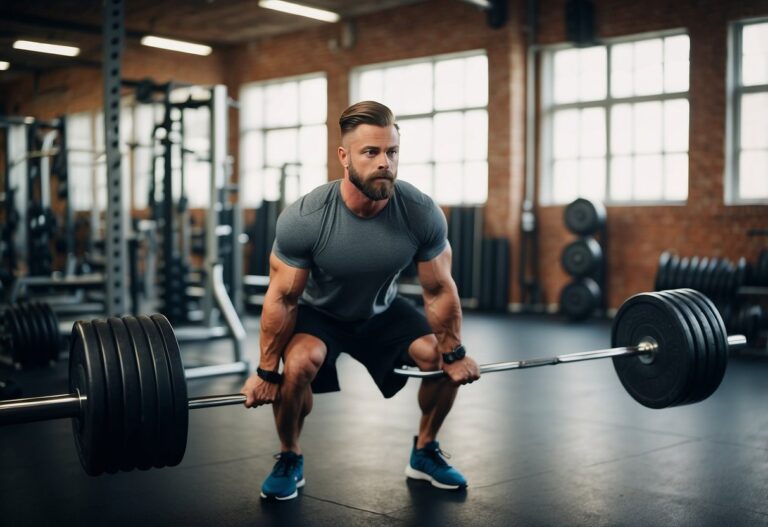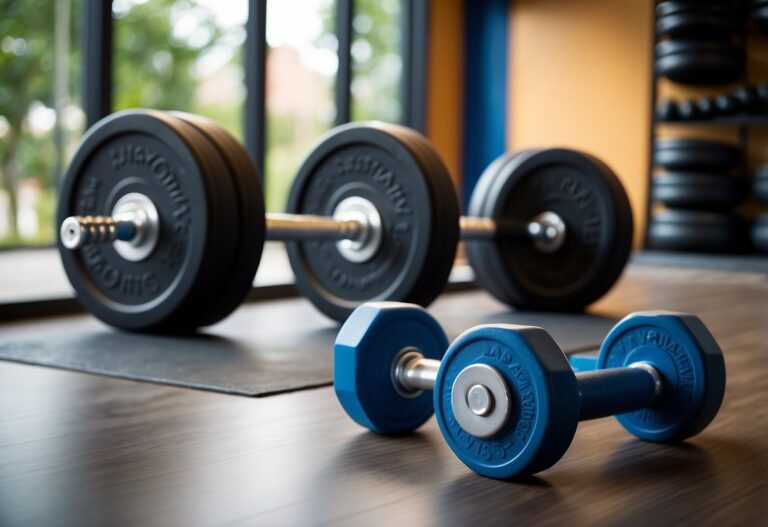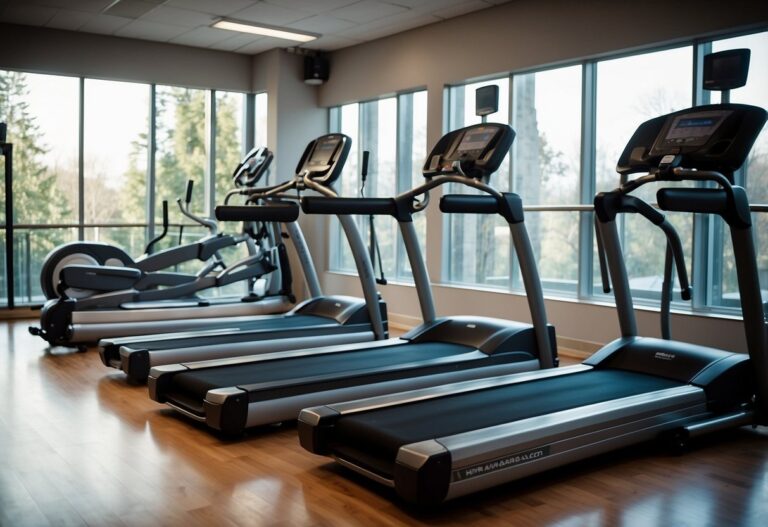Starting a new workout routine can be both exciting and challenging. Whether you’re a beginner or someone who’s been exercising for years, finding effective ways to improve your workouts is essential. What can you do to make your workouts more efficient and enjoyable?

Adopting the right tips can make a big difference in your fitness journey. Small changes in your routine, from warm-ups to choosing the right exercises, can help you achieve better results. The goal is to find practical and simple strategies that fit into your lifestyle and help you stay motivated.
Warm-up before starting
Warming up before your workout is crucial. It helps prepare your body and reduce the risk of injury. A good warm-up increases your heart rate and gets your muscles ready for exercise.
You can start with a simple march on the spot. Do this for about 3 minutes, then march forwards and backwards while pumping your arms.
Try heel digs by doing 60 heel digs in 60 seconds. This gets your legs and ankles moving, which is important before a run or leg-focused workout.
Diaphragmatic breathing is also helpful. Take a moment to breathe deeply and relax. This calms your nerves and prepares you for more intense activity.
Standing at the edge of a mat, slowly bend forward until your hands touch the mat. Walk your hands out to a plank position, hold briefly, then walk them back to your feet. Repeat for 30 seconds.
For upper body workouts, try wall slides. Stand with your back against a wall, hands next to your ears, and slide your arms up and down. This warms up your shoulders and arms.
Using a lighter weight variation of your planned exercise, like doing push-ups on a countertop before floor push-ups, can also be effective. This mimics your workout but at a lower intensity.
Remember, warming up should take at least 6 minutes. Adjust the time based on how your body feels to ensure you’re ready for your workout.
Incorporate Compound Movements
Incorporating compound movements into your workout routine is essential. These exercises work multiple muscle groups at once, making your workouts more efficient.
Exercises like the bench press and squats are great examples. They target various muscles and help build strength quickly.
If you’re looking for a full-body workout, try the deadlift. It targets your forearms, lats, glutes, and core.
Remember, using compound movements can make your exercises more effective and time-efficient.
Vary your routine regularly

Changing your workout routine every 8-12 weeks keeps you motivated and helps you avoid plateaus. When you stick to the same exercises for too long, your body can stop making progress.
Switching things up also reduces the risk of injury. Repeating the same movements can lead to overuse injuries. Adding variety allows different muscle groups to recover and strengthen.
Trying new exercises can make working out more enjoyable. Whether it’s adding a new sport, trying a different fitness class, or incorporating different equipment, variation maintains your interest and challenge. It could be as simple as changing the order of your exercises or using a different grip.
Balance consistency with variety to make the most of your workouts.
Focus on form over weight
When you work out, focus on your form more than how much weight you’re lifting. Good form helps prevent injuries and makes your workouts more effective.
Think about it: if you’re lifting incorrectly, you won’t target the right muscles. This means you’re not getting the full benefit of the exercise. Plus, bad form can lead to strains and sprains.
Imagine lifting weights at the gym. It’s easy to feel like you need to lift heavier to keep up with others. Don’t fall into this trap. It’s better to lift lighter weights correctly than to lift heavy weights poorly.
A good example is the bench press. If you lift too much weight and your arms wobble, you’re not using the right muscles. With less weight, you can control your movements and improve your strength.
Remember, it’s all about progressing slowly and steadily. You can always increase the weight as your form gets better. Make sure to check your posture and movement with each rep to ensure you’re doing it right.
By focusing on form over weight, you’ll build a solid foundation for your fitness journey. This approach leads to better long-term results and keeps you safe. Prioritising form helps you enjoy your workouts more and keeps you coming back for more.
For more insights on why focusing on form is important, check out The Key to Effective Workouts: Prioritising Form Over Weight.
Stay Hydrated Throughout the Workout
It’s crucial to stay hydrated during your workout for peak performance. Dehydration can impact how well you train and your overall well-being.
Always carry a reusable water bottle. Having it nearby serves as a reminder to sip water regularly.
If you’re exercising intensely, consider using a hydration pack. These packs make it easy to drink without stopping your activity.
For those longer sessions, drink water frequently. Small sips every 15 to 20 minutes can help keep you hydrated without causing discomfort. Stay aware of your body’s needs.
Remember, being hydrated is key to a successful workout. For more tips on hydration, visit this comprehensive guide.
Include Both Cardio and Strength Training
Adding both cardio and strength training to your workout routine is important. Cardio helps you improve heart health and burn calories. Running, cycling, and swimming are great examples.
Strength training, on the other hand, builds muscles and increases metabolism. Activities like lifting weights or using resistance bands are effective. Try combining both. For instance, you can do circuit training where you alternate between strength and cardio exercises, like the method described here. This way, you get the best of both worlds and keep your workouts interesting.
Utilise Bodyweight Exercises
Bodyweight exercises are a fantastic way to build strength without needing any equipment. They can be done anywhere, whether you’re at home, in a park, or travelling.
Start with the basics. Classic moves like push-ups, pull-ups, and squats are incredibly effective. For example, push-ups improve your upper body strength and can be modified to match your fitness level.
Don’t forget to mix things up. Try exercises like burpees and reverse crunches to keep your routine interesting and challenging. Doing different moves can help target various muscle groups and keep your workouts balanced.
Schedule Rest Days for Recovery
Giving your body time to rest is just as important as the workouts. When you exercise intensely, your muscles need time to repair and grow stronger. Schedule regular rest days to avoid overtraining.
Use your rest days to engage in active recovery. Activities like walking, yoga, or light stretching can keep your body moving without putting too much strain on it. This helps maintain flexibility and keeps blood flowing to your muscles.
Rest days also play a crucial role in preventing injuries. Muscles and joints need breaks to heal from the stress of frequent workouts. Skipping rest days can lead to burnout and decrease your performance.
Plan your rest days based on your workout intensity. For example, after a challenging HIIT or heavy strength session, give yourself a day off to recover fully.
Remember, being consistent with rest days is a part of a sustainable fitness routine. Don’t feel guilty about taking time off; it’s essential for your progress and well-being.
Track Your Progress
Tracking your progress is key to staying motivated. Start by keeping a workout journal. Writing down your workouts helps you see improvements over time. You can jot down the date, exercises, and weights used. Check out this guide for more details.
Progress photos are another effective way. Take photos regularly and compare them side by side. You’ll visibly see changes in your body. For more tips, see this article on fitness progress tracking.
Using a fitness app like Fitbod can also help. Fitbod lets you customise your workout plans and keeps track of your progress. It’s one of the best apps for tracking workouts. Logging your progress digitally can be very convenient.
Body measurements are also useful. Measure your waist, hips, chest, and other areas regularly. Write these down and compare them over time. You’ll be able to see inches lost or gained. Read more about fitness progress in this detailed guide.
Tracking your progress ensures you stay on top of your goals and feel more motivated each day.
Get enough sleep for muscle recovery
Getting enough sleep is essential for muscle recovery. During sleep, your body works to repair muscle tissues and replenish energy stores. Aim for at least 7 hours of quality sleep each night to support your workouts.
Sleep helps regulate hormone levels, which are crucial for recovery. Hormones like testosterone and growth hormone increase during deep sleep, aiding muscle repair.
Try drinking a cup of tart cherry juice an hour before bed. Tart cherry juice can improve sleep quality and has been shown to reduce muscle soreness.
A consistent sleep schedule can make a big difference. Going to bed and waking up at the same times each day helps your body get into a rhythm, making it easier to get restful sleep.
Understanding the Basics
Knowing the basics of a workout routine helps you avoid injuries and get the most out of your exercises.
Importance of Warm-Up
Warming up is essential before any workout. It prepares your body for the physical activity ahead by increasing your heart rate and blood flow to your muscles. This step helps reduce the risk of injuries and improves your performance.
Start with 5-10 minutes of light cardio, like jogging or walking. Follow this with dynamic stretches like leg swings or arm circles. These activities help to loosen up your muscles and joints, making them more flexible and ready for exercise.
Skipping a warm-up can lead to strains or sprains. Always make it part of your routine. Think of it as a way to ease your body into action, much like warming up a car before driving.
Proper Form and Technique
Using correct form and technique in your exercises is crucial. It ensures that you work the right muscles and prevents injuries. Poor form can lead to long-term damage and slower progress.
When lifting weights, keep your back straight and avoid locking your joints. Use a mirror to check your posture or get help from a trainer. Performing exercises in a controlled manner, rather than rushing through them, will yield better results.
Take the example of a squat. Your feet should be shoulder-width apart, and you should lower yourself by bending at the hips and knees, not letting your knees go past your toes. Proper form maximises muscle engagement and minimises the risk of injury.
Pay attention to your breathing as well. Inhale on the easier part of the exercise and exhale during the more challenging phase. This practice helps maintain stability and performance.
Focus on form, and you’ll notice improvements in strength and muscle tone without unnecessary injuries.
Optimising Your Routine
To get the most out of your workout, focusing on a balanced structure and making sure to incorporate rest and recovery is essential.
Balanced Workout Structure
A balanced workout structure ensures you target all major muscle groups. Incorporate a mix of compound and isolation exercises. Compound exercises, like squats and deadlifts, work multiple joints and muscle groups at once. This helps build overall strength and muscle coordination.
Isolation exercises, such as bicep curls, focus on a single joint and muscle group. This allows for more specific muscle development. Aim to include both types in your routine. Split your week to target different muscle groups on different days (e.g. legs, arms, and back).
Don’t forget about cardio and flexibility work. Activities like running or cycling improve cardiovascular health, while stretching and yoga enhance flexibility and prevent injuries.
Maintain consistency by following a schedule, but be ready to adjust based on how your body feels.
Incorporating Rest and Recovery
Rest and recovery are just as important as the workouts themselves. Muscles need time to repair and grow stronger. Ensure you have rest days in your weekly routine, and listen to your body.
Sleep plays a crucial role in recovery. Aim for 7-9 hours of quality sleep per night. Your body performs most of its repair work during sleep, improving muscle recovery and mental focus.
Incorporate active recovery sessions, such as light walking, stretching, or yoga, on days off. These low-intensity activities increase blood flow to muscles, aiding recovery without adding stress.
Proper nutrition is vital. Consuming a balanced diet with adequate protein, like combining whey and casein, helps muscle repair. Drink plenty of water to stay hydrated.
Integrating these practices can significantly enhance your workout results.
Advanced Tips for Enhanced Results
To reach the next level in your fitness journey, you need to focus on precise techniques and consistency. It’s not just about working hard; it’s also about working smart.
Tracking Progress
Keeping a close eye on your progress can help you stay motivated and make necessary adjustments. Tracking involves more than just noting down weights and reps.
Use a workout journal or an app to record your exercises, sets, reps, and weights each session. This helps in identifying patterns and making improvements.
Taking progress photos every few weeks can provide a visual representation of your changes, which can be incredibly motivating. Just be sure to photograph under similar conditions for accurate comparisons.
Monitoring your body measurements like waist, chest, arms, and thighs can give you detailed insight into where you’re gaining muscle or losing fat. Pair these measurements with body weight tracking for a complete picture.
Incorporate performance metrics such as how much you’re lifting or the duration you can sustain certain exercises. Noting this every few weeks can show improvements in strength and endurance.
Nutrition and Hydration
Fueling your body properly can enhance your workout results significantly. Nutrition isn’t just about calorie counting; it’s about providing your body with the right nutrients at the right times.
Start with a balanced diet that includes a mix of proteins, carbs, and fats. Proteins are crucial for muscle repair, so aim for sources like chicken, fish, or plant-based proteins. Carbs provide energy; opt for complex carbs such as brown rice and whole grains.
Hydration is key. Drink water throughout the day, not just during your workout. Being properly hydrated helps maintain your energy levels and aids in recovery. Aim to drink at least 8-10 glasses of water daily, more if you’re working out intensely.
Pre- and post-workout nutrition are vital. A pre-workout snack with carbs and a bit of protein can fuel your exercise, while a post-workout meal focused on protein can help with muscle recovery. Consider a shake with 20g each of whey and casein proteins after your sessions for optimal results.
Avoid overcomplicating your diet. Stick to whole foods and ensure you’re eating a variety of nutrient-rich foods to support overall health and fitness goals.







